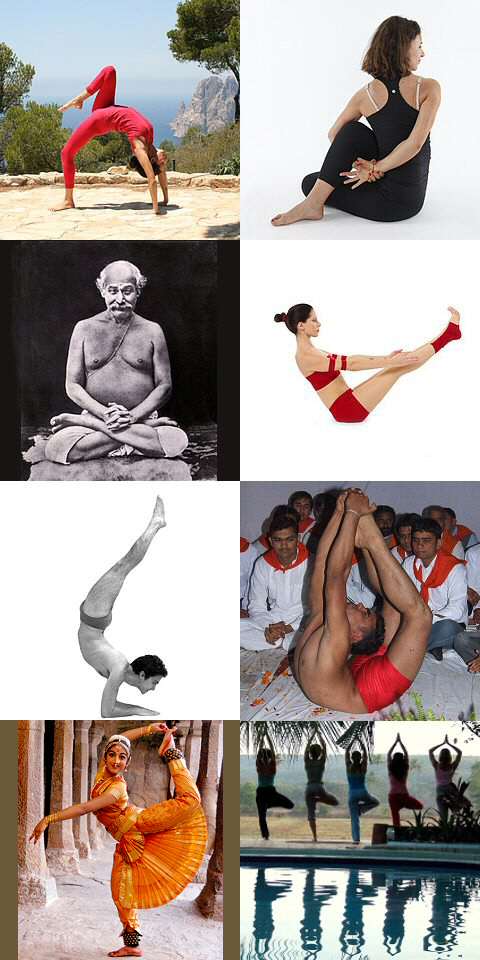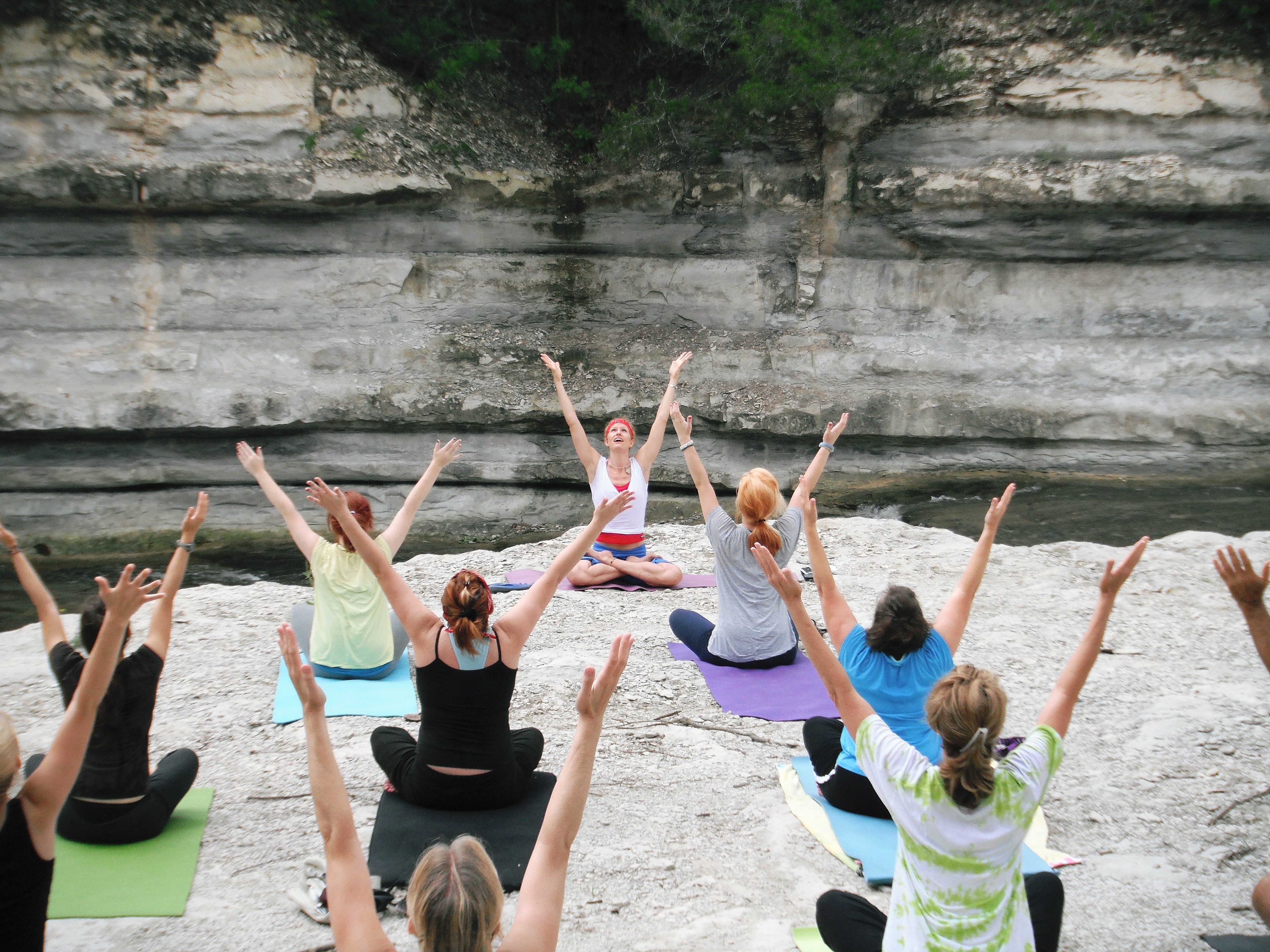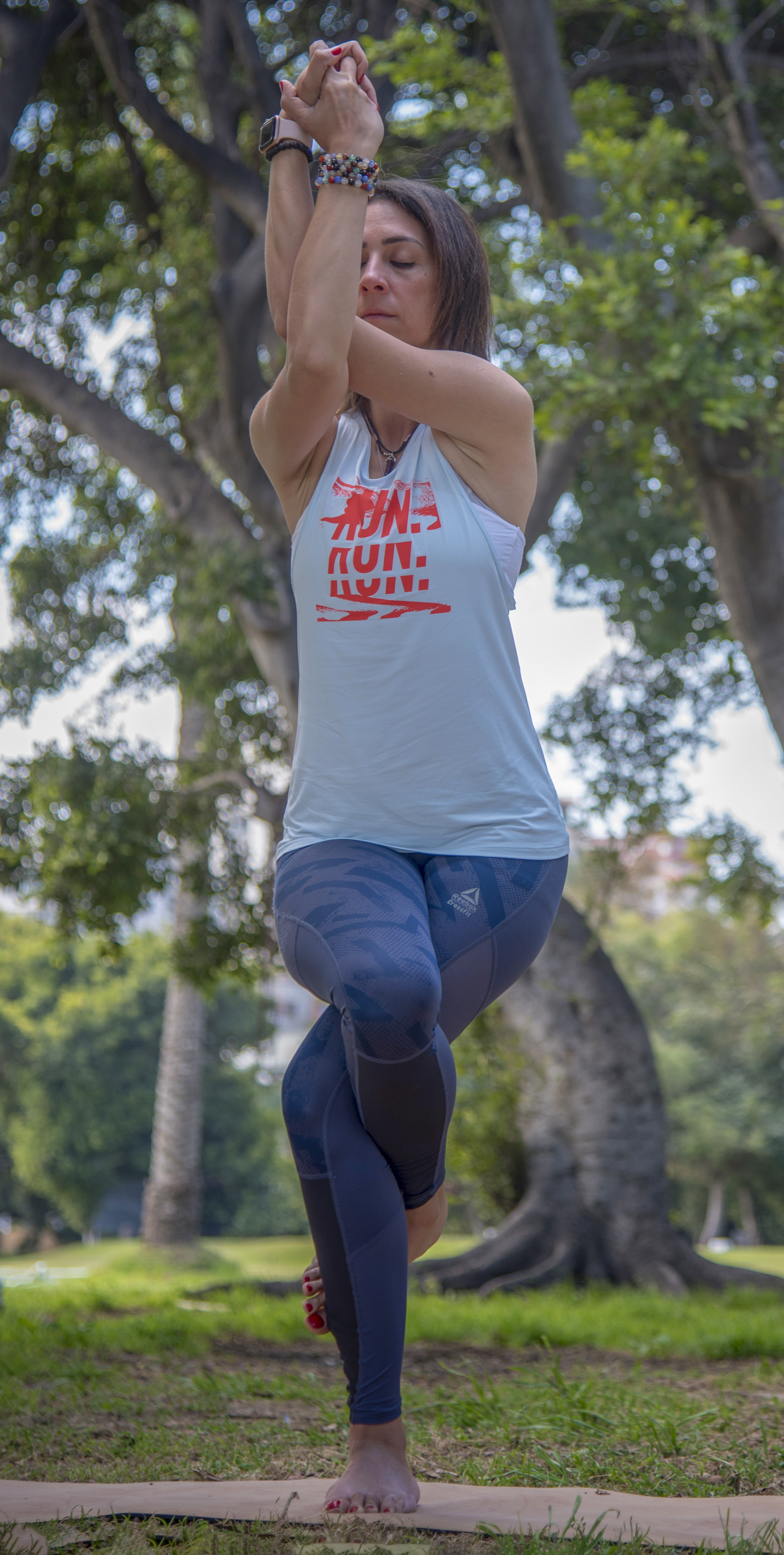|
Gomukhasana
Gomukhasana ( sa, गौमुखासन; IAST: ''Gomukhāsana'') or Cow Face Pose is a seated asana in hatha yoga and modern yoga as exercise, sometimes used for meditation. Etymology and origins The name comes from the Sanskrit गौ ''go'' meaning "cow", मुख ''mukha'' meaning "face" or "mouth", and आसन ''āsana'' meaning "posture" or "seat". The crossed legs are said to look like a cow's mouth, while the bent elbows supposedly look like a cow's ears. The pose is ancient as it is described in the ''Darshana Upanishad'' (3.3–4), written around the 4th century. For instance, it is listed and described within the 84 asanas in the 17th-century ''Haṭha Ratnāvalī'' (3.7–20). However, the current form of Gomukhasana with the hands behind the back is mentioned only in such ancient tantric texts as the '' Ahirbudhnya Samhita''. It is sometimes used for meditation and pranayama. Description The pose is entered from kneeling by crossing the legs; the heel ... [...More Info...] [...Related Items...] OR: [Wikipedia] [Google] [Baidu] |
Gomukhasana Yoga-Asana Nina-Mel
Gomukhasana ( sa, गौमुखासन; IAST: ''Gomukhāsana'') or Cow Face Pose is a seated asana in hatha yoga and modern yoga as exercise, sometimes used for meditation. Etymology and origins The name comes from the Sanskrit गौ ''go'' meaning "cow", मुख ''mukha'' meaning "face" or "mouth", and आसन ''āsana'' meaning "posture" or "seat". The crossed legs are said to look like a cow's mouth, while the bent elbows supposedly look like a cow's ears. The pose is ancient as it is described in the '' Darshana Upanishad'' (3.3–4), written around the 4th century. For instance, it is listed and described within the 84 asanas in the 17th-century ''Haṭha Ratnāvalī'' (3.7–20). However, the current form of Gomukhasana with the hands behind the back is mentioned only in such ancient tantric texts as the '' Ahirbudhnya Samhita''. It is sometimes used for meditation and pranayama. Description The pose is entered from kneeling by crossing the legs; the hee ... [...More Info...] [...Related Items...] OR: [Wikipedia] [Google] [Baidu] |
Darshana Upanishad
The ''Darshana Upanishad'' (Sanskrit: दर्शन उपनिषत्, IAST: Darśana Upaniṣad) is one of the minor Upanishads of Hinduism written in Sanskrit. It is one of twenty Yoga Upanishads in the four Vedas, and it is attached to the Samaveda. The text presents classical Yoga similar to the Patanjali's '' Yogasutras''-style format in a sequential ascending eight yogic stages, but unlike Yogasutras, the ''Darshana Upanishad'' includes kundalini concepts. The ultimate goal of Yoga, states the Upanishad, is self-knowledge and realizing the identity of one's Self (Atman) with the Universal Reality ( Brahman). History Gavin Flood dates the text to around 100 BCE to 300 CE. Georg Feuerstein suggests the text probably post-dates the Yogasutras. This Upanishad is also referred to as ''Yoga Darshana Upanishad'', ''Jabala Darshana Upanishad'', ''Jābāladarṣana Upanishad'',, The British Museum, page 920 and Darśanopaniṣad (दर्शनोपनिषत्). I ... [...More Info...] [...Related Items...] OR: [Wikipedia] [Google] [Baidu] |
Sitting Asanas
An asana is a body posture, originally and still a general term for a sitting meditation pose,Verse 46, chapter II, "Patanjali Yoga sutras" by Swami Prabhavananda, published by the Sri Ramakrishna Math p. 111 and later extended in hatha yoga and modern yoga as exercise, to any type of position, adding reclining, standing, inverted, twisting, and balancing poses. The '' Yoga Sutras of Patanjali'' define "asana" as " position thatis steady and comfortable". Patanjali mentions the ability to sit for extended periods as one of the eight limbs of his system.Patanjali '' Yoga sutras'', Book II:29, 46 Asanas are also called yoga poses or yoga postures in English. The 10th or 11th century ''Goraksha Sataka'' and the 15th century ''Hatha Yoga Pradipika'' identify 84 asanas; the 17th century ''Hatha Ratnavali'' provides a different list of 84 asanas, describing some of them. In the 20th century, Indian nationalism favoured physical culture in response to colonialism. In that enviro ... [...More Info...] [...Related Items...] OR: [Wikipedia] [Google] [Baidu] |
List Of Asanas
An asana is a body posture, used in both medieval hatha yoga and modern yoga. The term is derived from the Sanskrit word for 'seat'. While many of the oldest mentioned asanas are indeed seated postures for meditation, asanas may be standing, seated, arm-balances, twists, inversions, forward bends, backbends, or reclining in prone or supine positions. The asanas have been given a variety of English names by competing schools of yoga. The traditional number of asanas is the symbolic 84, but different texts identify different selections, sometimes listing their names without describing them. Some names have been given to different asanas over the centuries, and some asanas have been known by a variety of names, making tracing and the assignment of dates difficult. For example, the name Muktasana is now given to a variant of Siddhasana with one foot in front of the other, but has also been used for Siddhasana and other cross-legged meditation poses. As another example, the headsta ... [...More Info...] [...Related Items...] OR: [Wikipedia] [Google] [Baidu] |
Hip-opening Asanas
An asana is a body posture, originally and still a general term for a sitting meditation pose,Verse 46, chapter II, "Patanjali Yoga sutras" by Swami Prabhavananda, published by the Sri Ramakrishna Math p. 111 and later extended in hatha yoga and modern yoga as exercise, to any type of position, adding reclining, standing, inverted, twisting, and balancing poses. The '' Yoga Sutras of Patanjali'' define "asana" as " position thatis steady and comfortable". Patanjali mentions the ability to sit for extended periods as one of the eight limbs of his system.Patanjali '' Yoga sutras'', Book II:29, 46 Asanas are also called yoga poses or yoga postures in English. The 10th or 11th century ''Goraksha Sataka'' and the 15th century ''Hatha Yoga Pradipika'' identify 84 asanas; the 17th century ''Hatha Ratnavali'' provides a different list of 84 asanas, describing some of them. In the 20th century, Indian nationalism favoured physical culture in response to colonialism. In that envir ... [...More Info...] [...Related Items...] OR: [Wikipedia] [Google] [Baidu] |
Asana
An asana is a body posture, originally and still a general term for a sitting meditation pose,Verse 46, chapter II, "Patanjali Yoga sutras" by Swami Prabhavananda, published by the Sri Ramakrishna Math p. 111 and later extended in hatha yoga and modern yoga as exercise, to any type of position, adding reclining, standing, inverted, twisting, and balancing poses. The '' Yoga Sutras of Patanjali'' define "asana" as " position thatis steady and comfortable". Patanjali mentions the ability to sit for extended periods as one of the eight limbs of his system.Patanjali '' Yoga sutras'', Book II:29, 46 Asanas are also called yoga poses or yoga postures in English. The 10th or 11th century ''Goraksha Sataka'' and the 15th century ''Hatha Yoga Pradipika'' identify 84 asanas; the 17th century ''Hatha Ratnavali'' provides a different list of 84 asanas, describing some of them. In the 20th century, Indian nationalism favoured physical culture in response to colonialism. In that envir ... [...More Info...] [...Related Items...] OR: [Wikipedia] [Google] [Baidu] |
Haṭha Ratnāvalī
The ''Haṭha Ratnāvalī'' is a Haṭha yoga text written in the 17th century by Srinivasa. It is one of the first texts to name 84 asanas, earlier texts having claimed as many without naming them. It describes 36 asanas. Text The ''Haṭha Ratnāvalī'' is a Haṭha yoga text written in the 17th century by Srinivasa. It states (1.17-18) that asanas, breath retentions, and seals assist in Haṭha yoga. It mentions 8 purifications (shatkarmas), criticising the ''Hatha Yoga Pradipika'' for only describing 6 of these. It is one of the earliest texts (the other being the unpublished ''Yogacintāmaṇi'') actually to name 84 asanas, earlier manuscripts having simply claimed that 84 or 8,400,000 asanas existed. The 84 asanas listed (HR 3.7-20) include several variations of Padmasana and Mayurasana, Gomukhasana, Bhairavasana, Matsyendrasana, Kurmasana, Kraunchasana, Mandukasana, Yoganidrasana Yoganidrasana, ( sa, योगनिद्रासन) or Yogic Sleep Pose is a re ... [...More Info...] [...Related Items...] OR: [Wikipedia] [Google] [Baidu] |
Yoga As Exercise
Yoga as exercise is a physical activity consisting mainly of asana, postures, often connected by vinyasa, flowing sequences, sometimes accompanied by pranayama, breathing exercises, and frequently ending with savasana, relaxation lying down or meditation. Yoga in this form has become familiar across the world, especially Yoga in America, in America and Europe. It is derived from medieval Haṭha yoga, which made use of similar postures, but it is generally simply called "yoga". Academics have given yoga as exercise a variety of names, including modern postural yoga and transnational anglophone yoga. Posture is described in the ''Yoga Sutras'' II.29 as the third of the eight limbs, the ashtanga (eight limbs of yoga), ashtanga, of yoga. Sutra II.46 defines it as that which is ''steady and comfortable'', but no further elaboration or list of postures is given. Postures were not central in any of the older traditions of yoga; posture practice was revived in the 1920s by yoga guru ... [...More Info...] [...Related Items...] OR: [Wikipedia] [Google] [Baidu] |
Garudasana
Garudasana ( sa, गरुडासन; IAST: ''Garuḍāsana'') or Eagle Pose is a standing balancing asana in modern yoga as exercise. The name was used in medieval hatha yoga for a different pose. Etymology and origins The name comes from the Sanskrit words ''garuda'' (गरुड) meaning "eagle", and ''asana'' (आसन) meaning "posture" or "seat". In Hindu mythology, Garuda is known as the king of birds. He is the ''vahana'' (mount) of the God Vishnu and is eager to help humanity fight against demons. The word is usually rendered into English as "eagle", though the name literally means "devourer", because Garuda was originally identified with the "all-consuming fire of the sun's rays". The name is used for a different pose in the late 17th-century Gheranda Samhita, verse 2.37, which has the legs and thighs on the ground, and the hands on the knees. A one-legged balancing pose named Garudasana but closer to Vrikshasana is described and illustrated in the 19th centur ... [...More Info...] [...Related Items...] OR: [Wikipedia] [Google] [Baidu] |
Medieval Hatha Yoga Asanas
In the history of Europe, the Middle Ages or medieval period lasted approximately from the late 5th to the late 15th centuries, similar to the post-classical period of global history. It began with the fall of the Western Roman Empire and transitioned into the Renaissance and the Age of Discovery. The Middle Ages is the middle period of the three traditional divisions of Western history: classical antiquity, the medieval period, and the modern period. The medieval period is itself subdivided into the Early, High, and Late Middle Ages. Population decline, counterurbanisation, the collapse of centralized authority, invasions, and mass migrations of tribes, which had begun in late antiquity, continued into the Early Middle Ages. The large-scale movements of the Migration Period, including various Germanic peoples, formed new kingdoms in what remained of the Western Roman Empire. In the 7th century, North Africa and the Middle East—most recently part of the Eastern Roma ... [...More Info...] [...Related Items...] OR: [Wikipedia] [Google] [Baidu] |
Meditation Asanas
Meditation is a practice in which an individual uses a technique – such as mindfulness, or focusing the mind on a particular object, thought, or activity – to train attention and awareness, and achieve a mentally clear and emotionally calm and stable state. Meditation is practiced in numerous religious traditions. The earliest records of meditation ('' dhyana'') are found in the Upanishads, and meditation plays a salient role in the contemplative repertoire of Jainism, Buddhism and Hinduism. Since the 19th century, Asian meditative techniques have spread to other cultures where they have also found application in non-spiritual contexts, such as business and health. Meditation may significantly reduce stress, anxiety, depression, and pain, and enhance peace, perception, self-concept, and well-being. Research is ongoing to better understand the effects of meditation on health (psychological, neurological, and cardiovascular) and other areas. Etymology The English ... [...More Info...] [...Related Items...] OR: [Wikipedia] [Google] [Baidu] |
Buddhist Meditation
Buddhist meditation is the practice of meditation in Buddhism. The closest words for meditation in the classical languages of Buddhism are ''bhāvanā'' ("mental development") and '' jhāna/dhyāna'' (mental training resulting in a calm and luminous mind). Buddhists pursue meditation as part of the path toward liberation from defilements ('' kleshas'') and clinging and craving ('' upādāna''), also called awakening, which results in the attainment of Nirvana, and includes a variety of meditation techniques, most notably '' anapanasati'' (mindfulness of breathing). Other techniques include '' asubha bhavana'' ("reflections on repulsiveness");Deleanu, Florin (1992)Mindfulness of Breathing in the Dhyāna Sūtras Transactions of the International Conference of Orientalists in Japan (TICOJ) 37, 42-57. reflection on '' pratityasamutpada'' (dependent origination); '' anussati'' (recollections, including ''anapanasati'') and '' sati'' (mindfulness), culminating in ''dhyana'' (deve ... [...More Info...] [...Related Items...] OR: [Wikipedia] [Google] [Baidu] |




_from_Jogapradipika_1830_(detail).jpg)



